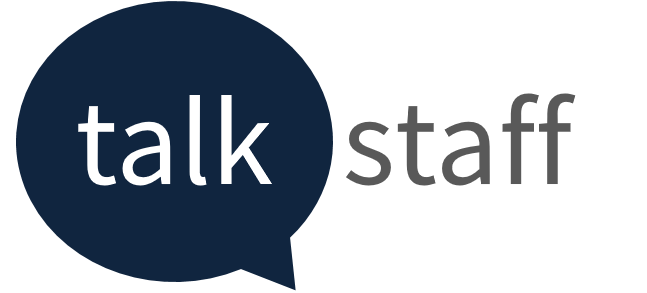
Attracting top talent requires more than just posting a job description and hoping for the best. It’s about crafting a job advert that grabs attention, sparks interest, and shows potential candidates why your company is the one they want to join. After all, the job advert is often the first impression you’ll make—and we all know how important first impressions are!
With the UK talent pool more competitive than ever, hiring managers and HR teams need to get creative in how they approach job adverts. It’s not just about listing requirements; it’s about selling the opportunity, the culture, and the future your business can offer. And if you’re feeling stuck, don’t worry—Talk Staff’s recruitment team is here to help with writing, refining, and optimising job adverts that bring in the best candidates.
Let’s dive into how to craft a job advert that stands out and draws in the right people.
Key Elements of an Effective Job Advert
A great job advert does two things: it attracts top talent and filters out those who aren’t the right fit. That’s why you need to strike a balance between clarity, engagement, and a little bit of salesmanship.
Here are the key ingredients to a winning job advert:
- Clear Job Title: Keep it straightforward and avoid jargon or overly creative titles. While “Marketing Guru” sounds fun, it might confuse or put off potential candidates. Stick to industry-standard titles like “Digital Marketing Specialist” or “HR Manager” so that candidates know what they’re applying for.
- Engaging Introduction: The first few lines are your chance to hook the reader. Think of it like the opening scene of a blockbuster movie—you need to make it exciting! Summarise the role, its importance, and why your company is the best place for the right candidate. Keep it concise but punchy.
- Core Responsibilities: Use bullet points to clearly outline the key duties. Stick to the essentials—five to seven points that give candidates a sense of what their day-to-day work will involve. Don’t over-complicate this section with minor tasks that could distract from the main responsibilities.
- Required Skills and Qualifications: Clearly separate “must-haves” from “nice-to-haves” to avoid deterring good candidates who might not meet every single criterion. Be realistic about what’s needed—nobody wants to scare off potential talent by asking for a laundry list of qualifications that few people will have.
- Salary and Benefits: Transparency is key, so where possible, include a salary range. Candidates appreciate knowing what’s on offer upfront, and it helps attract people who align with your budget. Don’t forget to highlight your benefits too—flexible working, pension schemes, and employee perks like wellness programmes can all make a big difference.
Pro-Tip: Remember, this isn’t just about what you need—candidates want to know what’s in it for them. Focus on the value the role brings to them, whether that’s career growth, a dynamic team, or exciting challenges.
How to Highlight Company Culture and Benefits
Candidates today want more than just a paycheque—they want to work somewhere they feel valued, supported, and aligned with their personal values. That’s where highlighting your company culture comes in. Your job advert should give candidates a sneak peek into what it’s like to work at your organisation.
Here’s how to do it:
- Company Overview: Include a short section that gives candidates a flavour of your company’s mission and values. Are you a tech start-up disrupting the industry, or a well-established business with a close-knit team? Whatever your culture, make it shine through in this section.
- Benefits and Perks: Beyond salary, outline the tangible perks of working with you. Whether it’s flexible working hours, career development opportunities, or team-building events, candidates want to know how your company goes the extra mile. For example, are you offering remote working options? Does your team have access to a great mentorship programme?
- Work-Life Balance: Show candidates that you care about their well-being. Highlight any policies that support a healthy work-life balance, such as flexible hours, hybrid working, or mental health initiatives. This is a huge selling point for many candidates, especially in today’s work environment.
Pro-Tip: If your company has won any awards for being a great place to work, this is the perfect spot to mention them. Employee testimonials or a link to your Glassdoor reviews can also add credibility.
Writing Clear and Accurate Role Responsibilities
While you want your job advert to be engaging, it’s also crucial that it’s clear and accurate. Candidates should be able to get a strong sense of what the role involves without feeling overwhelmed by a long list of vague or unrelated tasks.
Here’s how to get it right:
- Prioritise Key Responsibilities: Focus on the main tasks that define the role. Instead of listing every possible duty, keep it to the core responsibilities that will take up most of the candidate’s time. Use action verbs like “manage,” “oversee,” “develop,” and “collaborate” to make the role sound dynamic.
- Separate Must-Have Skills from Preferred Skills: Make sure to distinguish between essential skills and desirable but not required skills. Candidates are often put off by job adverts that seem impossible to meet, so be realistic about what’s non-negotiable and what would be a bonus.
- Avoid Overloading with Minor Tasks: A job advert should give a clear picture of the big-ticket items. Avoid bogging it down with smaller, occasional tasks that could distract from the overall message of the role.
Pro-Tip: Have someone currently in the role (or a similar one) review the job advert. They can give feedback on whether it accurately reflects the job and may suggest a few key responsibilities that you might have missed.
Avoiding Gender Bias and Using Inclusive Language
Inclusive language is critical for attracting a diverse range of candidates. The words you use in your job advert can either widen your candidate pool or unintentionally narrow it.
Here’s how to ensure your job advert is inclusive:
- Use Gender-Neutral Language: Avoid using words that might appeal to one gender more than another. Terms like “rockstar” or “ninja” tend to attract more male candidates, whereas words like “supportive” may resonate more with female applicants. Stick to neutral words like “team player” or “collaborative.”
- Watch for Superlatives: Phrases like “expert” or “world-class” can intimidate candidates who don’t feel they meet that high standard, even if they’re qualified. Keep the tone encouraging by focusing on practical skills rather than creating barriers.
- Include a Diversity Statement: Show your commitment to building a diverse and inclusive workplace. A short sentence like “We encourage applications from candidates of all backgrounds and experiences” can make a big difference in attracting diverse talent.
Pro-Tip: Consider using tools like gender-decoding software to double-check your advert for unintentional bias. It’s a simple but effective way to ensure your language is neutral and inclusive.
Talk Staff’s Recruitment Expertise in Crafting Job Adverts
Creating a job advert that draws in top talent isn’t just about filling a page with bullet points—it’s about understanding what candidates want and communicating the value your business offers. At Talk Staff, we’ve spent years working with businesses to craft job adverts that not only attract the right people but also filter out those who aren’t the best fit.
Our recruitment experts can support you in crafting job adverts that:
- Stand out in a crowded market.
- Showcase your company’s culture and benefits.
- Use inclusive language that appeals to a wide range of candidates.
- Clearly define the role’s responsibilities and requirements.
And if you need help with the early stages, our outsourced HR services can assist with writing accurate, detailed job descriptions that set the foundation for a brilliant job advert.
Ready to find the perfect candidate? Get in touch with Talk Staff and let us help you create a job advert that attracts top talent.
Last Updated on 4 months by Gary Parsons





